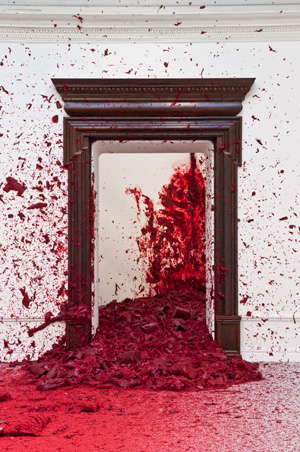In a series of special posts, guest blogger alum Marc Herbst and regular contributor Catherine Wagley chronicle the University of California education crisis. Following is Herbst’s second installment. — Ed.
Creativity doesn’t occur in a vacuum. Cultural and political expression find a unique voice in relationship to context. As Dada can’t be understood without World War I, nor Jackson Pollock without the Cold War, the creations of the University of California art professors I discussed in my last post should be understood in a field of wider aesthetic, rhetorical, and historic action.
The University of California occupation movement, which gathered Ricardo Dominguez’s and Ken Ehrlich’s productive energy, occurs in this state of affairs: budgets are tight, social services are slashed, corporations are bailed out. The priorities seem clear: profits over people.
At the turn of this decade, the inversion of that phrase, people over profits, was a clarion call for the globalization movement. Though equally radical in tactics, the emergence of the social imagination spawned by a global Internet allowed artists and activists to embody an entirely different creative frame. Emerging with the pageant-like protests of this era was a language of hope. Social space, utopia, other worlds — the globalization movement allowed for these sort of dreams.
But as California beggars itself and its crowing institutions — cutting classes, raising costs, outsourcing labor — dreamy talk just does not communicate.
Therefore instead of “Another World is Possible,” students, faculty and staff who began occupying the central and northern California campuses of the University of California this fall say, “We Have Decided Not to Die.” “Occupy Everything, Demand Nothing.” “We Are the Crisis.” “We Want Everything, Demand Nothing.”
Thus emerges a movement out of the graveyard.
These two videos crystallize for me this wide movement’s seductive post-workerist feel:
- The first is a fake news clip done by a Berkeley based media collective, “Better Bad News,” foregrounding the death of an American ideal (space flight) alongside the continuation of another one (student protest).
- The second, a solidarity video from the Academy of Refusal (the name that a student involved in an occupation of the Vienna Academy of Fine Arts renamed his/her campus) captures the ironic idealism of students who value education more then their schools do. Ironic, like falling in love with a corpse.
The corpse, again, is the state. Or more specifically here, the university system. Specific to the UCs: the profitable undergraduate education system, a system that is a more solid bond investment than sovereign debt which, nevertheless, uses the current crisis as a ruse to raise tuitions.
Theoretically, the movements are concurrent with the critical clarifications of immaterial labor; witness how universities change policies to better commodify thought-work while streamlining and uncritically redefining education. Folks like Gigi Rogero and websites like edufactory have been creating critical theory around this phenomenon of this neoliberalization of education.
The movement during this past autumn was undead, like a zombie that could not be stopped. And the state and the university seemingly are no longer interested in scholarship. As ghosts, the occupiers continue the highest legacy of the institution. It is curious to see the aesthetic of a radical undead. This aesthetic affected the look and feel of what happened in Southern California this winter.

Still from an unrelated film, "We have Decided Not to Die." Taken from https://socialismandorbarbarism.blogspot.com, a blog associated with the UC occupation movement.
Next installment: more problems (racism) and responses.
Marc Herbst is an artist, activist, and the editor of the Journal of Aesthetics and Protest.




Pingback: This blog post costs…. | all these birds with teeth: this is not about science.